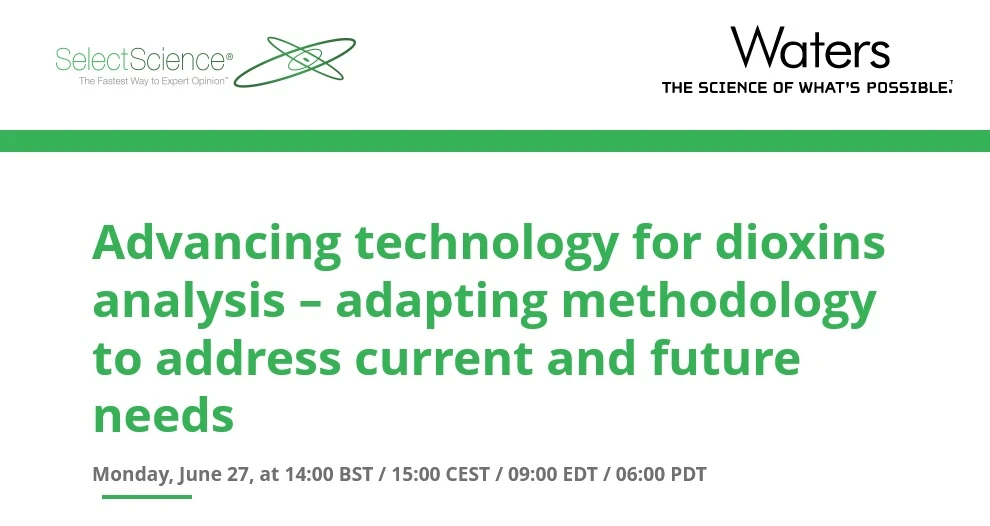Advancing technology for dioxins analysis – adapting methodology to address current and future needs

SelectScience: Advancing technology for dioxins analysis – adapting methodology to address current and future needs
With the decline in availability, and performance limitations of magnetic-sector high-resolution mass spectrometry (HRMS), many laboratories are investigating new methodology and instrumentation to address the demanding needs of ‘“dioxin’” and dioxin-like persistent organic pollutants (POP’s) analysis. In recent years, both the European Union (EU 644-2017 and EU 771-2017) and the United States (USEPA ATP 16130) have recognized the use of tandem quadrupole mass spectrometry (MS) as an acceptable alternative to traditional high-resolution magnetic sector-based methods. Additionally, other countries have evaluated and validated this methodology as a replacement for the traditional HRMS approach, and in doing so, have realized several advantages.
This webinar will discuss
- Selecting a new instrument to replace legacy HMRS
- How the atmospheric pressure gas chromatography (APGC) MS/MS technology that was selected compared with the previous instrument in performance and usability
- How the new method was accredited
Key learning objectives
- Assessing alternative systems for the analysis of dioxins and furans.
- The advantages of tandem MS and atmospheric pressure chemical ionization (APCI) as an alternative test procedure.
- Accrediting a new method.
Presenter: Peter Blow (HRMS Chemist, Environmental, ALS Global)
Peter has been involved in the development of dioxin analysis since 2002 when he established Australia’s first commercially available dioxin analysis capability at ALS. Initially joining ALS in 1991, he was involved in developing most of ALS’ original organic analysis methodologies as the Senior Organic Chemist.
A graduate of Queensland University of Technology, Peter has also held positions at Incitec, Elite Chemicals, and Caltex.
With almost 20 years’ experience in dioxin analysis, Peter has a wealth of knowledge on the subject.
Presenter: Rory Shadbolt (Editorial Team, SelectScience)